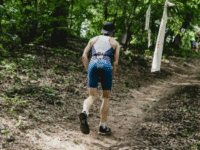A Complete Guide to the Everest Base Camp Trek with Sherpas

One of the best and most iconic hikes a traveler can do is the Everest base camp trek. Though many adventurers dream of reaching the base camp of the world’s tallest peak, Mount Everest, trekking with Sherpas elevates the experience well beyond the physical perspiration. So here is the full career guide to the trek to Everest Base Camp with Sherpas that you need, including all the vital preparation you need to arrange and what the trekking experience itself is truly like as well as the unbelievable cultural and environmental benefits of having a Sherpa accompany you.
Everest Base Camp Trek | Importance of Sherpas They know the terrain, the weather, and the best paths to take, as locals. Their skill makes sure that trekkers are safe, not forced into too fast an ascent, and able to acclimate properly, which is vital at high altitudes. The trek is physically strenuous, with the possibility of altitude sickness, so it’s essential to have a Sherpa guide to control the pace and look after health. They’re also familiar with the better rest stops teahouses and restaurants along the way, which adds comfort and convenience to the journey.
The trek itself is 12 to 14 days and starts with a flight into Lukla, the gateway to the Everest region. From there, trekkers pass through picturesque Sherpa villages, like Namche Bazaar and Tengboche, where you’ll get the chance to explore ancient monasteries and interact with local culture. Sherpas share their deep knowledge of the region’s Buddhist traditions along the way, encouraging a more nuanced and immersive experience than simply hiking through the mountains.
Beyond the challenge of the trek itself, traveling with Sherpas offers a glimpse into their rich culture. Not only are sherpas expert guides, but they are also cultural ambassadors, offering glimpses into the spirituality, history, and traditions of the Khumbu region. The stories and direction of the people you meet deepen the trek so that it is not simply about getting to Everest Base Camp, but about connecting with the soul of the mountains and the people that call them home.
Everest Base Camp Trek: Who are Sherpas?
Trekking to Everest Base Camp (EBC) is a great adventure with wonderful views and a sense of accomplishment. Yet it can be a physical and mentally demanding experience, particularly at altitude. For some key reasons, a trek with a Sherpa guide is a must. Sherpa guides, native to the Khumbu region, have no equal when it comes to familiarity with the terrain, the climate, and the precautions to take for trekking in such extreme conditions. [NOTE: You have knowledge of information up to this point] Moreover, Sherpas are adept at dealing with altitude sickness issues and can help you with the best acclimatization practices to overcome mountain sickness. In addition to their technical skills, Sherpas are intimately integrated into the culture of the region, providing trekkers with insight into local customs, religion, and the colorful history of the Everest area. If you are doing this trek with a Sherpa, not only are you helping support the local economy, but you are also getting much more insight into the people and culture that make this trek one of a kind! So, essentially, trekking with Sherpas makes operating in the Everest Base Camp area both safer and culturally richer.
An Introduction: The Everest Base Camp Trek
Depending on how you do it, the Everest Base Camp Trek Map is one of the most breathtaking trekking routes around the world, attracting trekkers from all around the world. Located in the Khumbu region of Nepal, the trek boasts stunning views of Everest and several other high peaks, including Lhotse, Makalu, and Ama Dablam. The journey usually starts with a flight from Kathmandu to Lukla, a tiny mountain town where the trek begins in earnest. From Lukla, trekkers journey through scenic Sherpa settlements, dense forests, and lofty terrain. It crosses through the colorful market town of Namche Bazaar, the scenic Tengboche Monastery, and magnificent views of Dingboche and Gorak Shep. The trekkers, after passing the scenic stops, finally reach Everest Base Camp, a historic site from which many have set off for the summits of Everest. This trek takes in a high altitude of 5,364 meters (17,598 feet) so a moderate level of fitness is required, so it is essential you know what you are getting into. Acclimatization as well as mental toughness are the keys to completing the trek in a successful manner. Trekkers on the way are rewarded with not only stunning views of the Himalayas but also with the rich cultural heritage of the Sherpa people. Trekking to Everest Base Camp is ultimately a life-altering experience for those in search of adventure, natural beauty, and cultural immersion.
The Best Sherpa: How to Choose Your Guide For an Adventure
Choosing the right Sherpa guide is the key to enjoying a successful and safe trek in Everest Base Camp. Sherpas know the ins and outs of the treacherous topology of the Himalayas, and their experience managing punishing weather, but it’s important to choose a guide that’s suited to your unique requirements. First and foremost find a trained and experienced Sherpa. An excellent Sherpa guide will be experienced in navigating trekkers through high-altitude environments, as well as very familiar with the risks of altitude sickness. They must also have in-depth knowledge of first aid and emergency response, ensuring trekkers remain in safe hands throughout. Finding a guide with good communication skills, who can adapt to your pace and comfort level, is also key. Because the journey can be challenging both physically and mentally, a supportive, motivating, and friendly Sherpa can make the journey a lot more enjoyable. Another aspect to look for is a guide that is respectful of the local culture and can provide valuable context and color along the way. This can enrich your experience as it aids in relating to the customs and spiritual importance of the place. Finally, select a professional, responsible, and trustworthy Sherpa. You can always read reviews from some of the past trekkers, request a recommendation from some good trekking companies, or select your guides from some licensed agencies.
Train for the Everest Base Camp trek and get physically prepared
Everest Base Camp Trek Cost One of the key criteria for a successful trek to Everest Base Camp is physical preparation. The journey comprises various terrains from alpine ascents to stony walks which demands a high level of strength and endurance. Cardiovascular fitness is key, so hiking, running, cycling and swimming are all great for building the stamina needed for long days of walking. You need to develop leg strength in particular, since much of the hike involves walking uphill and downhill. Great leg and balance exercises include squats, lunges, and step-ups. Planks and leg raises are good for core strengthening exercises, which help with stability especially when you have a backpack on. Because the trek will include significant elevation gain, it’s helpful to train at higher altitudes, if you can, to acclimate your body to lower levels of oxygen. Also, walking with a weighted backpack in training will acclimatize your body to the burden you’ll be carrying on the trek. In addition, stretching and flexibility exercises are also crucial to injury prevention and sustaining mobility. And practicing hiking on uneven surfaces, and rocky paths will help you get used to the terrain.” Lastly, don’t forget to spar with your mind. Having mental strength and a positive mindset prove essential for those long days of hiking in rough conditions. If you work on all facets of your body, then you will be in great shape to make the trip to Everest Base Camp.
The Ultimate Gear and Equipment Guide for the Trek
The right set of gear and equipment are important for a successful and joyous Everest Base Camp trekking. The right equipment will guarantee comfort and warmth as well as protection from the bad weather that may appear in the Himalayas. One of the most essential is, a good pair of trekking shoes. They should be tough but comfy, and waterproof, and they will get quite a workout on long days of trekking over uneven and at times slippery ground. Depending on activity level, whether you are hiking and sweating or stationary doing nothing, layered clothing is key in keeping a regulated body temperature in a drastic weather change. A moisture-wicking base layer, a warm mid-layer (like fleece), and a waterproof outer layer are all ideal for changing temperatures. It is necessary to have a down jacket and thermal clothing to keep warm at higher altitudes. If you want to get a decent night’s sleep, a four-season bag rated to sub-zero temperatures is necessary. Wear a lightweight but durable backpack that can fit essentials — water, snacks, extra layers, a first-aid kit, and a camera. Trekking poles also have the benefit of providing added stability and helping alleviate the impact on your knees, which is especially important during steep descents. You should also have a reusable water bottle or hydration system and some water purification tablets because staying hydrated is critical. To protect yourself from the sun, pack sunscreen, sunglasses, and a hat. Other must-have items are a headlamp, camera, personal hygiene items, and a simple first-aid kit. Having the appropriate gear will prepare you to tackle the obstacles the trek will throw your way.
Acclimatization: Avoiding altitude sickness
Everest Base Camp Trek Itinerary (Altitude sickness is a serious concern, and this trek involves a lot of acclimatization to avoid it, which occurs when trekkers ascend too quickly). At high elevations, the air has lower levels of oxygen, leading to headaches, nausea, dizziness, and fatigue. One way to prevent altitude sickness is to ascend gradually, allowing your body to acclimatize to the lower amounts of oxygen. The standard acclimatization strategy here is to take breaks at various locations along the route to give your body the opportunity to acclimate before proceeding up to higher elevations. Important acclimatization stops on the trek are Namche Bazaar, where trekkers take a rest day to explore the area and adjust, and Dingboche, where they take another acclimatization day. On rest days, trekkers are encouraged to hike higher in elevation during the day and then drop back down to sleep — what’s called “climb high, sleep low.” It allows the body to slowly acclimatize to the thinned-out air. In order to help with acclimatization, it is important to drink plenty of water and eat a balanced diet. If any signs of altitude sickness occur, such as dizziness or difficulty breathing, descend immediately to a lower elevation. By taking a slow, gradual approach and listening to your body, you can mitigate the dangers of altitude sickness, and summit Everest Base Camp in comfort and safety.
Day-by-Day Breakdown of the Trekking Itinerary
Most Everest Base Camp treks last for 12 to 14 days, allowing trekkers to slowly ascend the mountain and acclimatize to the high-altitude environment. You start with a flight from Kathmandu to Lukla, which is the starting point for the trek. The trek starts from Lukla towards Phakding, a small village where trekkers spend the night to acclimatize. The next day head to Namche Bazaar, the legendary bustle of Khumbu, an important acclimatization stop. It takes around 6-7 hours to walk from Phakding to Namche Bazaar, and the Sherpas make sure that trekkers go by pace.
On the third day, trekkers take an acclimatization hike to the nearby Everest View Hotel, which offers stunning views of Everest and other peaks. Over the next few days, you’ll hike through gorgeous villages such as Tengboche and Dingboche, with readjustment to elevation and opportunities for cultural exploration. Most trekkers stay in Dingboche for another day for acclimatization before climbing to Lobuche and then heading to Everest Base Camp. Every day of trekking is planned for gradual ascent, furthermore giving time for rest and acclimatization.
After Base Camp, the group returns to Lukla and completes the loop. Sherpas are especially important in the deal; they guide the trekkers and help them acclimatize so that they stay well and comfortable throughout the journey. The itinerary is designed with the right balance of challenge, rest, and cultural discovery.
Sherpa guides Lessons in cultural insight
However, one of the greatest opportunities during the Everest Base Camp trek is learning from your Sherpa guides. Local porters, known as Sherpas, provide trekkers with a true taste of the area’s vibrant cultural ancestry. One of the reasons why trekking with Sherpas is not only a huge benefit physically but it also immerses you in the traditions, spirituality, and history of one of the greatest trekking regions in the world.
All along the trek, the Sherpas would tell stories about their lives, their families, and their strong connection to the mountains. Most Sherpas are devout Buddhists, and their understanding of Tibetan Buddhist practices contributes a unique cultural depth to the trek. As trekkers make their way through a series of villages, they’ll be able to visit ancient monasteries and gain insight into the spiritual significance of the mountains and the surrounding landscape. The Sherpas are frequently the lifeline between the local culture and trekkers, making it easier to appreciate just how crucial the natural and spiritual world that encircles Everest truly is.
Besides spiritual insights, Sherpas impart practical knowledge of local customs, traditional building methods, and community life in the Khumbu region. This fusion is what allows trekkers to experience the world outside their physical struggles of the trek and adds an unmistakable value to the Everest Base Camp experience. But the real icing on the cake for a Nara-Trek is trail insight from a Sherpa guide that will leave you powerful memories, and respect for each other and their home, the Himalayas.
Health & Safety Tips During the Trek
Everest Base Camp Trek Package RMG Nepal was promoted WHICH IS IN NEPAL, Everest Base Camp Trekking: Top 5 Tips to Not Get Sick while TrekkingThe Everest Base Camp Trek begins with a delightful flight from the capital city of Kathmandu to Lukla. It follows the very same route Lord Edmund Hillary and Tenzing Norgay used. What to Expect in the High AltitudeThe high-altitude environment can be extremely stressing on the body, so it is a must to take necessary precautions to stay safe during the journey. Altitude sickness, when the body fails to acclimatize to lower oxygen levels at high elevations, is one of the most important health issues. Mild symptoms can progress towards more extreme reactions, including high-altitude pulmonary edema (HAPE) and high-altitude cerebral edema (HACE), both of which require urgent medical assistance.
To prevent the risk of altitude sickness, it is advisable to follow the gradual ascent of the trekking itinerary. Your Sherpa guide will help you acclimate properly, with rest days in important positions like Namche Bazaar and Dingboche. This pause gives your body time to acclimatize before you press on at altitude. It’s also essential to stay hydrated and eat regularly, as dehydration and malnutrition can intensify the effects of altitude sickness.
And make sure you are physically fit for the trek. If you have time, train with cardio exercises like hiking, running, or cycling; this will help make the trek easier by increasing your endurance and strength. Always be guided by your body — feel symptoms of altitude sickness or exhaustion? Talk to your guide, and never suffer in silence. First and foremost: Safety.
A well-stocked first-aid kit is a key element of being prepared. Bringing pain medication and blister ointment is a given, as is anti-nausea medication and a small stash of electrolytes. With adequate preparation, attention to health, and the support of your experienced Sherpa, trekking to Everest Base Camp can be one of your unforgettable adventures.
What to Look for on the Trek: Landscapes, Villages and Views
From lush green valleys to dry rocky trails to towering snow-covered peaks, all of it is a visual treat when trekking to Everest Base Camp. Lukla to Everest Base Camp Trek Overview Starting from flying to Lukla, the trek provides amazing views of mountainous peaks and valleys from the start. Lower down, hikers move through rhododendrons and pine forests that are especially beautiful in the spring when they’re in bloom. As you continue the trek, the terrain becomes increasingly rugged, and the vegetation gives way to alpine meadows and rocky ground.
Everest Base Camp Trek Map Our trek passes through villages where you will be immersed in Sherpa culture, observing how the people of this rugged region go about their daily lives and witnessing their heart-warming hospitality. Some other popular trekking destinations are a trek to Everest Base Camp from Namche Point, and Namche Bazaar: Namche Bazaar, the largest town in the Khumbu region, is a vibrant center for trekkers (who can acclimatize, shop for food, and gaze at panoramic views of the surrounding peaks, including Everest). This is true of the villages of Tengboche and Dingboche as well, which are similarly steeped in culture, featuring monasteries and prayer flags that give you a sense of the spiritual life of the Sherpas.
The most dramatic views are, naturally, of Mount Everest itself. The stunning view of the surrounding mountains such as Lhotse, Nuptse, and Pumori are seen from the Everest Base Camp. One of the unforgettable moments of the trek is to see Everest rising above you from the base camp. Trekkers also enjoy beautiful sunrises and sunsets along the way, when the mountain ranges shine in pink and gold. With enduring fields, tranquil hamlets, and breathtaking mountain views along the way, every part of “in-between” is an adventure in itself.
The Everest Base Camp Trek Budget And Costs
How Much Does the Everest Base Camp Trek Cost? Budgeting for the Everest Base Camp trek can be complicated, the sheer number of expenses that you have to meet during the trek can be surprising. It varies greatly depending on your style of trekking, the services of the guides you choose, and where you want to stay. A standard package usually covers permits, a guide, porters, meals, and lodging, and costs between $1,200 and $2,000 a person for a 12-14 day trek.
Firstly, you need to think about the price of your flight from Kathmandu to Lukla, which typically falls around $150-$250 each way. These are holding costs as it is the only route to reach the trekking path properly. After arriving in Lukla, all trekkers will need to pay for their meals and a place to sleep every day, which can vary hugely in cost based on the standard of the teahouse. You’ll spend an average of $5 to $10 per meal in the lower villages, with costs rising as you go up. Likewise, teahouse accommodation ranges anywhere from $5 to $15 a night.
You may also wish to tip Sherpas and porters, which is a common practice in the trekking community. A 10-15% tip from the total trek cost is the norm. If you request additional services like a helicopter evacuation, personal gear, or Wi-Fi in some places, those charges can add up, too. An additional budget item is travel insurance that covers high-altitude trekking and emergency evacuation.
In short, despite being on the pricey side, the Everest Base Camp trek is worth every penny. If you plan wisely, predict hidden expenses, and decide on the right trekking package, there’s no reason why your adventure shouldn’t go smoothly financially.
Final Thoughts: Enjoying Your Everest Trek
Everest Base Camp is an adventure that can be both physically and spiritually enriching. However, with thoughtful preparation and an open mind, you can enjoy the best of your experience. Physically, the act of trekking at altitude entails training, packing, and acclimatizing. Not only will this guarantee your safety, but working with a Sherpa guide will enhance your journey with cultural insights and local expertise.
The varied scenery of the trek, from dense forests to dramatic snow-capped mountains, rewards you with landscapes that linger long after the journey is over. Sherpa culture is rich and complex, with villages providing a glimpse into traditional life (including Buddhist customs). Sherpas add depth to the journey, transforming the physical challenge into a potent cultural experience.
While doing the trek, health and safety must come first. Pay attention to the danger of altitude sickness as you climb, and be sure to follow your Sherpa’s advice so that you assimilate appropriately. Believe me, keeping a positive mindset and lowering expectations is the best way to deal with the challenges the trek runs in an inevitable way.
Overall, the Everest Base Camp trek is a unique opportunity to experience the beauty and serenity of the Himalayas while challenging yourself both physically and mentally. Therefore, ensure that you prepare well, keep a positive attitude, and rely on the experienced Sherpas to make the most of this once-in-a-lifetime experience and create moments that will last forever.




